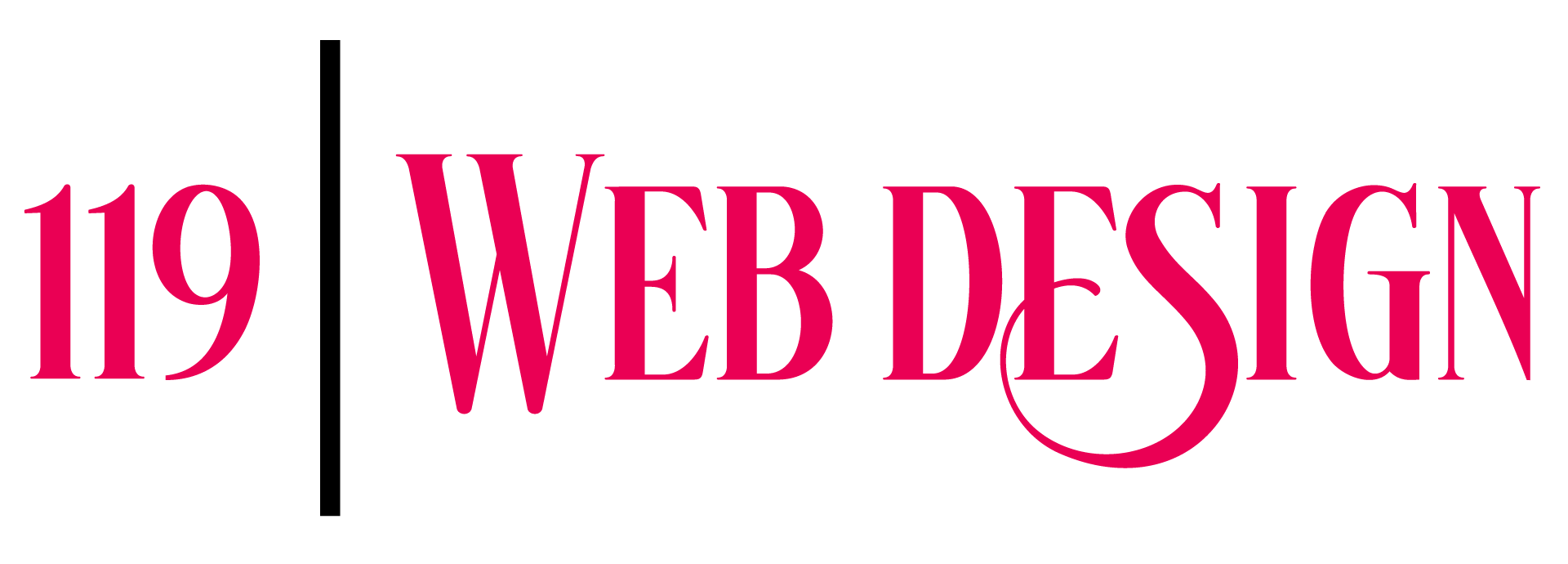In the ever-evolving landscape of digital innovation, web design plays a pivotal role in shaping user experiences, driving engagement, and ensuring seamless functionality across devices and platforms. Among the most powerful tools in a designer’s toolkit are web design patterns, which offer tried-and-tested solutions for creating cohesive, scalable, and visually appealing interfaces. These patterns not only streamline the design process but also enhance user experience by providing consistency and predictability.

What is a Web Design Pattern?
A web design pattern refers to a reusable solution to a commonly encountered problem in web design. These patterns aim to provide a set of guidelines and best practices that can be applied consistently across various projects to achieve efficient and effective web development. By following established patterns, designers and developers can streamline their workflow, enhance user experience, and ensure consistency in their work.
Key Components of Web Design Patterns
- Content Structure
- Semantic HTML : Using appropriate HTML tags to structure content logically, such as
<header>,<footer>,<article>, and<section>. - Card-Based Layouts : Organizing content into modular cards that adapt to different screen sizes, often achieved through frameworks like Bootstrap or Foundation.
- Layout Frameworks
- Grid Systems : Creating responsive layouts using grid-based designs, such as those offered by CSS Grid or Flexbox.
- Responsive Design : Ensuring websites look good on all devices by adjusting layouts for mobile, tablet, and desktop screens.
- Navigation Systems
- Global Navigation : Consistent navigation bars or header sections that allow users to access different parts of the website.
- Local Navigation : Secondary navigation within individual sections or pages, such as breadcrumbs or category menus.
- Popular tools: WordPress navigation customization, Shopify menu management.
- Visual Style Guides
- CSS Variables : Defining consistent color schemes, typography, and spacing using CSS variables.
- Color Palettes : Selecting harmonious colors that align with brand identity, such as those provided by Coolora or Adobe Color.
- Responsive Design Techniques
- Breakpoints : Setting specific width thresholds to adjust layouts for different screen sizes.
- Media Queries : Using media queries to apply different styles based on the device viewport size.
- User Experience (UX) Principles
- Accessibility : Ensuring websites are usable by everyone, including individuals with disabilities, through features like ARIA roles and screen reader compatibility.
- Feedback Mechanisms : Providing visual cues, such as loading spinners or success messages, to indicate actions have been taken.
- Design Systems and Frameworks
- Pattern Libraries : Collections of reusable components, such as buttons, forms, and cards, that can be quickly integrated into projects.
- Frontend Frameworks : Tools like React, Angular, or Vue.js that provide pre-built components and patterns for building interfaces.
- Performance Optimization
- Lazy Loading : Delaying the loading of images or videos until they come into the viewport.
- Code Splitting : Separating JavaScript bundles to reduce initial load times, often done using tools like React Router or Next.js.
- SEO Considerations
- Image Optimization : Compressing images and using descriptive alt texts to improve page speed and accessibility.
- Structured Data : Implementing schema markup, such as with Google’s Structured Data Testing Tool, to enhance search engine understanding.
By incorporating these web design patterns into your projects, you can save time, reduce errors, and deliver high-quality user experiences. Regularly updating your knowledge of emerging patterns and tools ensures your work remains relevant and effective in the ever-evolving digital landscape.
Are there only 23 design patterns?
No, there are far more than 23 design patterns, though the 23 patterns known as the “Gang of Four” (GoF) are among the most well-known and frequently referenced in software development. These 23 patterns were identified by four researchers in 1999 and are considered foundational for object-oriented programming. However, the total number of design patterns exceeds 23, with many additional patterns recognized for various contexts and architectural considerations.
Below is a list of the 23 Gang of Four design patterns:
- Singleton
- Observer
- State
- Strategy
- Factory
- Abstract Factory
- Adapter
- Bridge
- Composite
- Decorator
- Dynamic Proxy
- Chain of Responsibility
- Command
- Interpreter
- Iterator
- Memento
- Model
- View
- Controller
- Presenter
- Business Delegate
- Session Facade
- Transaction Service
Design patterns continue to evolve as new technologies and requirements emerge, leading to the identification of additional patterns beyond the original 23. For example, patterns like those for modern web applications or mobile apps have been developed to address specific challenges in those domains.
119WebDesign provides comprehensive resources and tools for designers and developers to explore and implement these patterns effectively.

What Are the 4 Main Types of Patterns Used in Design?
Design patterns are fundamental solutions to common design problems in various fields such as software engineering, architecture, and fashion. Here are the four primary types of design patterns:
- Creational Patterns : These patterns deal with the creation of objects and their management. Common examples include:
- Singleton Pattern : Ensures that only one instance of an object exists.
- Factory Pattern : Creates instances of objects based on a set of criteria.
- Object Pooling : Reuses previously created objects to optimize memory usage.
- Structural Patterns : These patterns focus on improving the structure of software systems by abstracting away complex subsystems. Examples include:
- Facade Pattern : Simplifies the interface of a system by hiding complexities.
- Adapter Pattern : Converts the interface of one class into another compatible interface.
- Composite Pattern : Combines multiple objects into a single unit.
- Behavioral Patterns : These patterns focus on the behavior of objects and how they interact. Key examples are:
- Strategy Pattern : Defines a family of algorithms and allows selecting the most suitable one.
- Command Pattern : Encapsulates a request as an object, making it easy to undo or redo.
- Observer Pattern : Observes changes in an object and acts accordingly.
- Concurrency Patterns : These patterns handle multi-threaded programming challenges. Examples include:
- Thread Safety : Ensures that multiple threads can access shared resources safely.
- Locks : Prevents multiple threads from accessing a resource simultaneously.
- Deadlock Prevention : Avoids situations where multiple threads wait indefinitely for resources.
These patterns provide a foundation for designing scalable, maintainable, and efficient systems. By understanding and applying them appropriately, designers can solve recurring problems effectively.

What Are the 3 Types of Web Design?
There are primarily three main types of web design, each serving different purposes and catering to varying needs. Understanding these types can help businesses choose the most suitable design for their goals.
- Static Websites
These are the simplest form of websites, where the content does not change dynamically. Static sites are ideal for basic informational websites, such as those showcasing products, services, or company information. Content is typically pre-written and remains unchanged unless manually updated. Examples include landing pages or small business websites. - Dynamic Websites
Dynamic websites are interactive and often built using server-side programming languages like PHP, ASP.NET, or Node.js. They allow for real-time interactions, such as user logins, form submissions, or content management systems (CMS). E-commerce platforms and social media sites fall under this category due to their interactive nature and ability to handle large amounts of data. - CMS-Based Websites
Content Management Systems (CMS) like WordPress, Joomla, or Drupal enable users to manage and modify their website content through an intuitive interface. These websites are highly customizable and are perfect for businesses needing frequent content updates, blogs, or news portals. Their flexibility makes them a popular choice for marketers and developers alike. - E-commerce Websites
Designed specifically for online shopping, these websites feature product listings, shopping carts, payment gateways, and order tracking systems. Platforms like Shopify, Magento, or WooCommerce are commonly used to build and manage e-commerce sites, focusing on user experience and seamless transactions.
Each type of web design has its strengths, and the choice depends on the specific requirements of the project. Whether you need a simple informational site, an interactive platform, or a fully functional online store, understanding the differences between these types can guide you toward the best solution.
What Are the Five Golden Rules of Web Designing?
- User-Centered Design
- Prioritize the user experience by focusing on usability, accessibility, and intuitiveness.
- Create user personas to understand target audiences and tailor designs accordingly.
- Ensure navigation is logical and accessible, avoiding confusion.
-
Consistency Is Key
- Maintain a consistent visual style, including color schemes, typography, and layout.
- Use a uniform design across all pages to create a cohesive brand identity.
- Stick to a consistent design pattern for buttons, menus, and interactive elements.
-
Responsive Design
- Optimize for all screen sizes, ensuring seamless experiences on desktops, tablets, and mobile devices.
- Use flexible layouts and media queries to adapt content dynamically.
- Test designs across various devices to ensure functionality and aesthetics.
-
Accessibility First
- Design with accessibility in mind, incorporating features like alt texts for images, proper contrast ratios, and readable fonts.
- Ensure keyboard navigation works smoothly and that forms are easy to fill out.
- Provide clear labels and avoid using solely reliance on visual cues.
-
SEO-Friendly Design
- Incorporate meta tags, alt texts, and structured data to improve search engine visibility.
- Use clean URLs and ensure fast loading times by optimizing image sizes and reducing unnecessary code.
- Ensure the site is crawlable by search engines through effective internal linking and proper site structure.
By following these principles, web designers can create more effective, user-friendly, and high-performing digital experiences. Link to 119WebDesign for more resources on web design best practices.

Types of Website Design Structures
There are four primary types of website design structures, each serving different purposes and user experiences. Understanding these structures helps in creating a functional and user-friendly website.
- Hierarchical Structure
- A hierarchical structure organizes content in a tree-like format, with main sections branching into sub-sections.
- Example: A typical website with a home page linked to “About Us,” “Services,” and “Contact” sections.
- Navigation is usually via a menu or breadcrumb trail, making it intuitive for users.
-
Sequential Structure
- A sequential structure presents content in a linear fashion, guiding users through a specific path.
- Example: A landing page funnel directing users from awareness to conversion, such as sign-ups or purchases.
- Ideal for campaigns or workflows requiring a specific user journey.
-
Matrix Structure
- A matrix structure provides multiple options or paths at each decision point, offering flexibility to users.
- Example: A news website allowing users to choose categories or topics upon arrival.
- Useful for complex decisions or when multiple outcomes are possible.
-
Database-driven Structure
- A database-driven structure uses dynamic content, often generated from a backend system.
- Example: An e-commerce site pulling product listings from a catalog or inventory database.
- Best for applications or websites needing real-time updates and customizability.
Each structure has its benefits depending on the website’s goals. Hierarchical structures are ideal for information-heavy sites, while sequential structures excel in marketing funnels. Matrix structures offer versatility, and database-driven structures are perfect for interactive applications.
For more insights and examples, explore our comprehensive guide on website design structures.




0 Comments